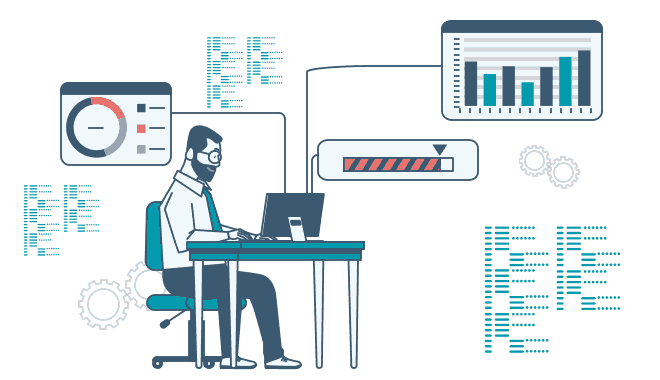Trade on Autopilot
From momentum to arbitrage, XeltoMatrix bots are engineered to adapt, analyze, and act faster than any human ever could.
Smart strategies. Real results.

Trade on Autopilot

From momentum to arbitrage, XeltoMatrix bots are engineered to adapt, analyze, and act faster than any human ever could.
Smart strategies. Real results.
XeltoMatrix Bot Families: Precision-Built Automation for Every Market
XeltoMatrix offers a complete ecosystem of specialized trading bots, each engineered to dominate specific asset classes and trading styles.
By combining institutional-grade methodologies with real-time AI adaptation, our bot families deliver tailored strategies that maximize performance across forex, crypto, commodities, indices, stocks, and metals—giving every trader the edge they need in a fast-moving world.

Momentum Bots
Methodology:
Momentum Bots target assets across all classes—commodities, stocks, forex, crypto, and more—showing sustained price direction and volume. These bots use advanced technical analysis, volume algorithms, and price action recognition to enter trades when trends begin, and exit as momentum fades. Their real-time adaptability allows them to capitalize on rapid market shifts.
Institutional Context:
Momentum trading is central to many global hedge funds and prop desks, who use powerful algorithms to spot and follow trends in every market, from equities and bonds to energy and crypto. Institutional systems react instantly to breakouts, volume surges, and price trends, seeking to maximize gains from both short- and long-term moves.
Example Use Cases:
A Momentum Bot may enter a strong move in S&P 500 futures after positive economic data, ride a sharp gold rally, or jump into a surging Bitcoin trend following a regulatory announcement.

Arbitrage Bots
Methodology:
Arbitrage Bots are designed to exploit price inefficiencies and discrepancies between markets and exchanges in any asset class. These bots can perform cross-exchange crypto arbitrage, inter-market spreads in commodities, price gaps in equities, and—most uniquely—arbitrage between electricity used in mining operations and the crypto generated from mining, creating dual profit streams.
Institutional Context:
Arbitrage is a backbone strategy for global investment banks, quaint shops, and energy companies. These players operate sophisticated, high-speed systems to capture fleeting price differences in stocks, futures, currencies, commodities, etc. XeltoMatrix elevates this with its proprietary approach, pairing real-time electricity pricing with crypto trading for unmatched efficiency in energy and digital asset markets.
Example Use Cases:
An Arbitrage Bot may buy Ethereum on one crypto exchange and sell on another for profit, trade Brent crude across regional markets, or dynamically switch mining operations to electricity sales when grid prices spike—then re-invest profits in rapid crypto market trades.

Market Maker Bots
Methodology:
Market Maker Bots work in all liquid asset classes, placing simultaneous buy and sell orders to profit from the bid-ask spread and provide critical liquidity. These bots adapt to changing market depth and volatility, ensuring efficient execution and stable pricing, even during volatile periods.
Institutional Context:
Market making is the foundation of global market stability, run by major banks and high-frequency trading firms in equities, forex, energy, metals, and crypto. Their algorithms facilitate smooth market functioning and provide liquidity, often earning consistent returns even in turbulent times.
Example Use Cases:
A Market Maker Bot might maintain tight spreads in oil futures, provide order book liquidity for a new altcoin, or stabilize forex pairs in low-volume hours.

Swing Trading Bots
Methodology:
Swing Trading Bots focus on capturing medium-term price moves, typically holding positions from several hours to several days or weeks. They use technical patterns, sentiment analysis, and sometimes fundamental factors to identify turning points—buying oversold assets and selling overbought ones, or vice versa.
Institutional Context:
Swing trading is favored by multi-strategy hedge funds and commodity trading advisors. These firms use algorithmic systems to scan for patterns, seasonality, and mean-reversion in all asset classes. By combining automated entry/exit rules with disciplined risk management, institutions can profit from price swings while avoiding much of the noise of day trading.
Example Use Cases:
A Swing Trading Bot might enter a long position in oil after a sharp decline and a double-bottom technical pattern, or short a stock after overbought conditions, or catch a crypto reversal after a parabolic move.

Statistical Arbitrage Bots
Methodology:
Statistical Arbitrage Bots use advanced quantitative models to identify pricing anomalies and inefficiencies between highly correlated assets. By monitoring historical relationships, these bots look for instances when prices diverge from expected patterns—then simultaneously buy the undervalued asset and sell the overvalued one. The positions are typically closed when prices revert to their statistical mean, capturing the spread as profit. These bots are driven by data, using techniques such as pairs trading, cointegration, and volatility arbitrage.
Institutional Context:
Statistical arbitrage is a core methodology at top quantitative hedge funds and proprietary trading firms. Institutions employ teams of data scientists and mathematicians to build models that constantly search for small, fleeting price discrepancies across stocks, commodities, currencies, and more. By deploying these models at scale, they can execute thousands of trades a day—often with little exposure to broader market risk.
Example Use Cases:
A Statistical Arbitrage Bot may detect that gold and silver prices have temporarily diverged beyond their historical correlation and trade both assets until the spread returns to normal. In the crypto world, it might trade related coin pairs (e.g., BTC and ETH) when their price relationship becomes unbalanced, capturing profits as they revert.

Event Horizon Bots
Methodology:
Event Horizon Bots are built to capitalize on sharp market movements caused by scheduled or breaking news events. These bots continuously monitor economic calendars, news feeds, and social sentiment for signals of high-impact developments, such as central bank announcements, geopolitical news, energy inventory releases, or regulatory updates. When a significant event occurs, the bots react instantly, executing trades to catch the volatility spike before the broader market can adjust.
Institutional Context:
Event-driven trading is a highly specialized approach used by global macro funds, news-trading desks, and high-frequency trading firms. Institutions invest heavily in real-time data and natural language processing to interpret news the moment it hits the market, giving them a decisive speed advantage. By entering and exiting positions within seconds or minutes of an event, they can profit from rapid, event-fueled price swings inaccessible to manual traders.
Example Use Cases:
An Event Horizon Bot might go long on oil futures immediately after a surprise OPEC output cut, short a stock after an earnings shock, or catch crypto volatility from major regulatory news.
Ready to transform your trading?
Join XeltoMatrix today and make your next trade your smartest one yet!

Join XeltoMatrix today and make your next trade your smartest one yet!

